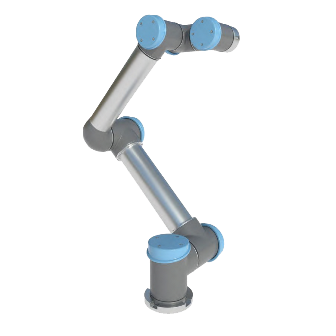Traditional automation often involves implementing controlled devices or machines, such as industrial robots, to automatically execute manufacturing applications. The goal of traditional automation is to eliminate the need for human involvement as much as possible. Automating with the ABB IRB 2400 or the FANUC M-710ic/50 allows for this to be accomplished. However, traditional industrial automation leaves out a large portion of manufacturers as not every operation can be completely automated with robots and other machinery. There are many productions that require human workers to carry out certain tasks. Fortunately, the development of cobots has brought about a new form of automation and that is collaborative automation.
For collaborative automation instead of automating with traditional industrial robot arm, the FANUC CR-15ia and other cobots are used. Cobots are small, compact robots built with numerous safety features including force limitation, sensors, rounded exteriors, and no pinch points. Their enhanced safety features allow them to operate along side or work collaboratively with humans. Unlike traditional robot manipulators, cobots do not require safety barriers. They can safely interact with workers without posing additional safety risks. With traditional automation robotic manipulators must be surrounded by barriers or fencing to protect workers.
Another feature of collaborative automation is it is intuitive. Collaborative robots have little to no learning curve, allowing anyone form the novice to the seasoned robot expert to program and use them. Cobots feature hand guidance programming also known as lead through programming. To program the Universal UR5 all users need to do is guide its industrial robotic arm through the steps of the desired application. The UR5 will then be able to replicate the exact steps to execute the application. Other types of industrial robots typically are programmed through a teach pendant or offline software. Both of these programming options have become more user-friendly than the robotic programming of the past but they require more of a learning curve than lead through programming.
Collaborative automation also allows for flexible redeployments which is ideal for manufacturers with short or variable production runs. Collaborative robots can be setup and running immediately out of the box. They do not require complex integrations or the installation of multiple pieces of equipment. Their intuitive programming allows new applications or program changes to be completed within just minutes. Short changeover times means the Universal UR10 can be reassigned applications quickly. Cobot users do not have to worry about downtime due to reprogramming. Their light mass and compact size also allows for them to be easily moved around production floors to fill in where needed.
Robots Done Right |
Used Robot Sales |
Collaborative Automation

Robots Done Right is the place to start when it comes to used robots. Contact us if you are interested in buying or selling your used robot.